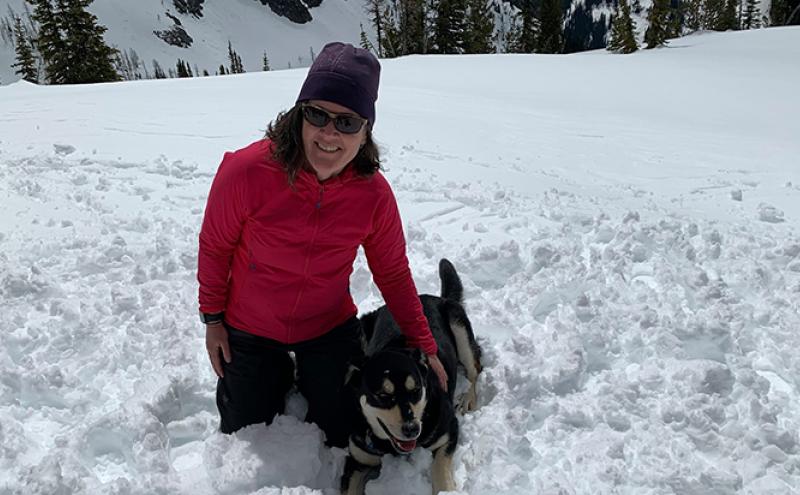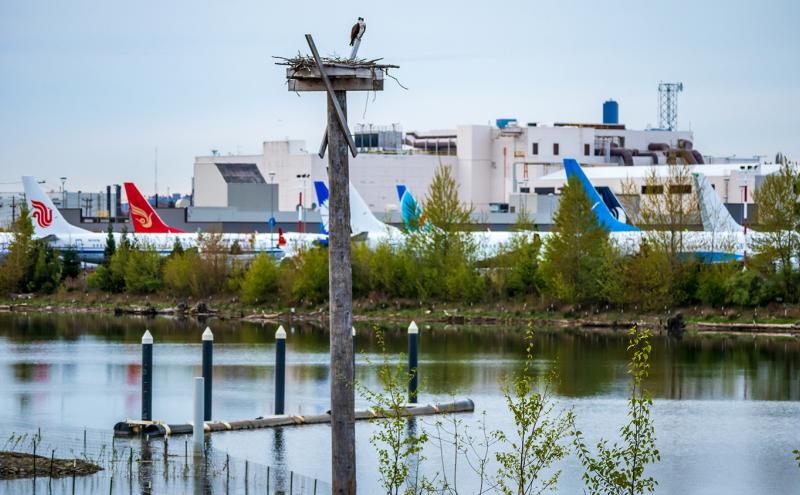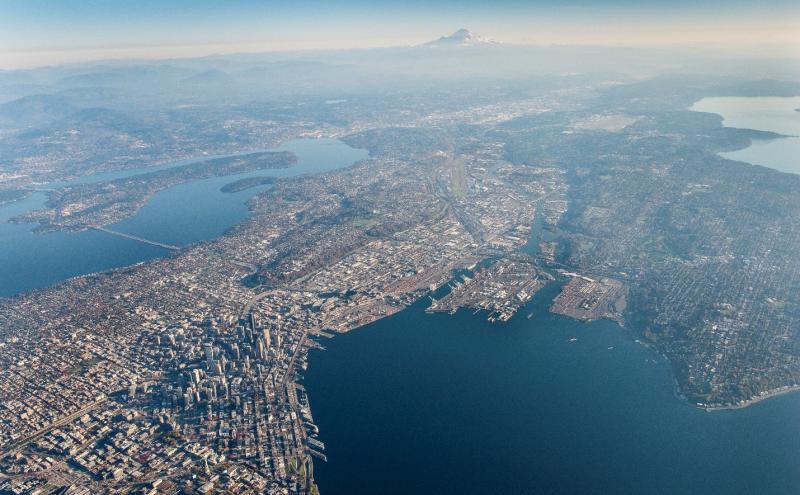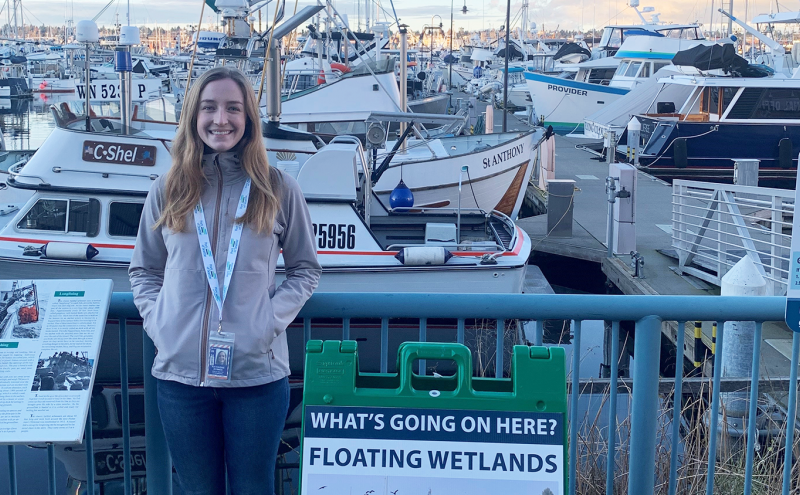
As Elise Lasky finished up her Master of Marine Affairs Degree at the University of Washington, her dream was to tackle complex environmental problems in the maritime industry, and a fellowship with the Washington Sea Grant program helped her opened this door. The Washington Sea Grant program, administered by the University of Washington, helps early career professionals address the challenges facing Washington’s oceans and coasts by funding research and educating and supporting several graduate fellowship programs.
In 2020 Lasky landed a one-year Washington Sea Grant Hershman Fellowship position with the Port of Seattle working with its Maritime Environmental and Sustainability Department. That was the first year the Port hosted this fellowship. So far the Port has hosted a total of three graduate students engaged in ocean and coastal policy issues.
The Washington Sea Grant Fellowship program places recent graduates in organizations like the Port. The Port benefits from their experience and assistance with developing policies and programs related to operating the seaport, including energy, habitat restoration, climate resiliency, and community engagement.
“A lot of places are doing really important and awesome work in the environmental space in our region, but they don’t always have entry level positions for that type of work,” Lasky said. “The Sea Grant program gives you access to that kind of work as a new grad and helps you understand what is out there as you progress in your career. It was an amazing opportunity that I couldn’t pass up.”
Broadening representation
The Port of Seattle Commission recently renewed an interlocal agreement with the University of Washington to continue participation in the Sea Grant Fellowship program for the next three years. The agreement allows the Port to host one fellow a year from September 2022 to October 2025 from either the Hershman or Keystone Fellowship programs. For 2022-23, the Port will host a Washington Sea Grant Keystone Fellow to assist with priority environmental work.
The Keystone Fellowship program recruits and engages early career professionals who are underrepresented in the marine science, policy, and industry workforce and gives them experience, training, and mentorship. The goal is to broaden representation in the marine science, policy, and industry workforce, which is aligned with the Port’s equity goals.
Port environmental work in 2022-2023 includes design, construction, and monitoring of mitigation bank projects in the Green-Duwamish River Watershed and surrounding shorelines as well as research on local kelp forests and eelgrass beds. And supporting habitat and stewardship initiatives through community engagement, stewardship, research and writing, data analysis, and project coordination.
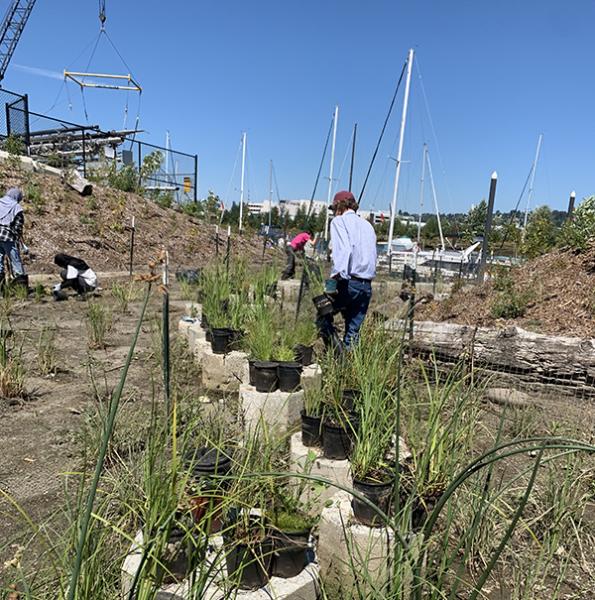
As part of the selection process, the Port gets matched with candidates by the University of Washington. Interview topics include the candidates’ views on sustainability and the maritime environment, as well as diversity, equity, and inclusion. During the selection process, candidates expressed a passion for environmental matters, science communication, the maritime industry, and social justice.
Mutually beneficial
The Sea Grant program benefits both students and organizations. Fellows get a meaningful professional experience. And the Port gets another person on the Maritime Environment and Sustainability team to work on important environmental initiatives.
“The program provides practical hands-on experience in marine science and policy in a public agency and potential exposure to career pathways,” said Kathleen Hurley, Port Senior Environmental Program Manager, and the primary Sea Grant mentor. “The Port benefits from the energy and experiences of fellows, and fresh ideas of how we might approach projects and issues. The fellows are an integral part of our team.”
Lasky’s work at the Port focused primarily on climate action. Her role was split between the Port’s Maritime Sustainability team and the Office of Equity, Diversity, and Inclusion (OEDI), often working on projects that bridged the two departments. One of her favorite projects was creating a community engagement playbook that demonstrated ways for the Maritime Environment and Sustainability team to include equity in environmental community engagement work. Other high-impact projects included the Ocean Acidification Action Plan, the Northwest Ports Clean Air Strategy, the Maritime Climate Action Plan, and the Equity Index.
Read Lasky's blog posts on her work tracking greenhouse gas emissions:
“One of the most amazing parts of my fellowship was working and learning from awesome folks at the Port who are really great at what they do,” she said. “I was able to use a lot of what I learned in grad school, put that information into action, and take away tangible skills. After my fellowship I was able to point to specific parts of climate action planning I’ve participated in and done research for.”
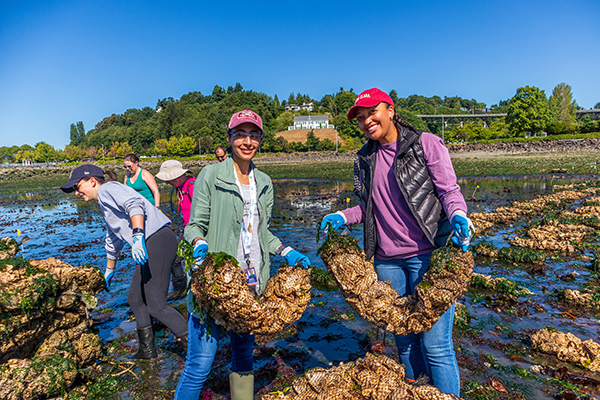
Because the Port collaborates with other government entities and organizations, the fellowship also introduced Lasky to a wide range of environmental careers. Many of her Port colleagues worked in the consulting field and suggested that as a next step; Lasky is now working in Environmental, Social, and Governance (ESG) and Social Impact at the global consulting firm Point B.
“What the Port does really well is supporting fellows in their learning with networking opportunities across the organization. Even though I worked in sustainability, I would talk with folks across the Port and learn from their experience. I had access to so many parts of the organization that was valuable in helping me figure out what I wanted next.”
Sea Grant segue
2021-2022 Hershman fellow Katie Byrnes is wrapping up her year working with the Port. With her background in environmental science and a recent Master of Marine Affairs, Byrnes wanted professional experience working on ocean and coastal issues.
She was drawn to the Port because of her interest in natural resource management and over the past year has worked on projects like kelp restoration, mitigation banking, and the Smith Cove Blue Carbon Project.
Read Byrnes' blog posts:
“It's been a good segue between graduate school and what my career will look like,” she said. “I’ve really enjoyed my experience managing partnerships, getting to do field work every other week, and seeing where the data comes from. I also managed the inspection of Port-owned shoreline to evaluate the feasibility of habitat restoration in those areas.”
She said her work at the Port has shaped her interest in managing environmental and marine projects and has increased her confidence working in the professional world.

